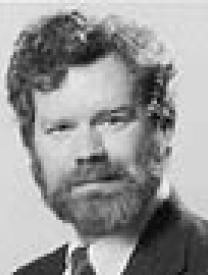- Professor of Physics and Astronomy (1985-)
- Chair, Department of Physics and Astronomy, University of Pennsylvania (1996-2001)
- William Smith Term Professor of Physics (1993-98)
- Alexander von Humboldt-Stiftung, Senior Scientist, DESY, Hamburg, Germany (1987-88)
- Associate Professor, University of Pennsylvania (1981-85)
- Assistant Professor, University of Pennsylvania (1975-81)
- Research Associate, University of Pennsylvania (1974-75)
- Research Associate, Rockefeller University (1972-74)
Honors include:
- Henry Primakoff Lecturer, University of Pennsylvania, 2006
- Fermilab Frontier Fellow, 2005
- Keck Distinguished Visiting Professor, Institute for Advanced Study, 2001
- William Smith Term Professor of Physics, University of Pennsylvania, 1993-1998
- Fellow, American Association for the Advancement of Science, 1992
- Fellow, American Physical Society, 1987
- Alexander von Humboldt-Stiftung, Senior U.S. Scientist Award, 1987-1988
- Honorary Master of Arts, University of Pennsylvania, 1982
Ph.D., University of California at Berkeley (1972)
M.A., Physics, University
of California at Berkeley (1969)
B.S. MIT (1968)
Theoretical Elementary Particle Physics
In the last 30 years, there has been a tremendous advance in our understanding of the elementary particles and their interactions. We now have a mathematically consistent theory of the strong, electromagnetic, and weak interactions-the standard model-which is almost certainly the correct description of Nature down to a distance scale 1/1000th the size of the atomic nucleus. However, nobody believes that the standard model is the ultimate theory-it is too complicated and arbitrary.
Therefore, most current activity is directed towards discovering the new physics which must underly the standard model. One approach, exemplified by superstring theories, is to try to develop a "theory of everything". However, promising ideas involve incredibly short distance scales and make little contact with accessible energies at present. Another direction, expected to be very important in the next decades, is to build larger accelerators to directly search for new particles and interactions. An equally important and complementary approach is to subject the standard model to diverse high-precision tests to determine how good it is and where it might break down. My research has been directed towards the theoretical interpretation of the various experimental probes, and the phenomenological implications of fundamental theories.
Much of my work in recent years has involved the interpretation of high-precision tests, and has exploited the fact that the global analysis of many experiments often yields more information than the sum of the individual experiments. Such global analyses involve collecting the data, deriving uniform and accurate theoretical formulas to interpret it, developing expressions for the possible effects of new physics, and fitting the data to search for or set limits on new physics.
A related effort has been a study of the possibilities for discovering and
studying the properties of possible additional gauge bosons at future
colliders.
Another of my major interests involves theoretical models for
neutrino mass and their laboratory, astrophysical, and cosmological
implications. My collaborators and I have analyzed the solar neutrino data, and
have argued that the data favor a neutrino mass (rather than astrophysical)
explanation of the solar neutrino deficit. We have developed analysis programs
for the interpretation of the data according to matter-enhanced
Mikheyev-Smirnov-Wolfenstein neutrino oscillations. I have also been involved in
the analysis of big bang nucleosynthesis.
I have also had a long standing interest in grand unified theories and their consequences. Recently, I have become interested in the phenomenological consequences of semi-realistic superstring compactifications. My collaborators and I have developed techniques to classify the possible vacua of such theories which do not break supersymmetry at the string scale. We have studied the implications of a class of closed string solutions for additional gauge bosons, new particles, the origin of intermediate scales, and the consequences for the masses of quarks, charged leptons, and neutrinos. Our current work emphasizes the classification and study of open-string theories and their vacua. I am also studying types of observable new physics at the TeV scale suggested by these string vacua.
- Magnetic Monopoles in Grand Unified Theories" (with S.-Y. Pi), Phys. Rev. Lett. 45, 1-4 (1980).
- "Grand Unified Theories and Proton Decay," Physics Reports 72, 185-385 (1981).
- "A Comprehensive Analysis of Data Pertaining to the Weak Neutral Current and the Intermediate Vector Boson Masses" (with U. Amaldi, A. Bohm, L.S. Durkin, A.K. Mann, W. J. Marciano, A. Sirlin, and H.H. Williams), Phys. Rev. D 36, 1385 (1987).
- Electroweak baryogenesis in a supersymmetric U(1)' model, (with J. Kang, T. j. Li, and T. Liu), Phys. Rev. Lett. 94, 061801 (2005), hep-ph/0402086.
- The Higgs sector in a U(1)' extension of the MSSM, (with T. Han and B. McElrath), Phys. Rev. D 70, 115006 (2004), hep-ph/0405244.
- Elementary Particles in Physics (with S. Gasiorowicz), in Encyclopedia of Physics, Third Edition (Wiley-VCH, 2005), www.physics.upenn.edu/~pgl/e27/E27.pdf.
- Toward realistic intersecting D-brane models, (with R. Blumenhagen, M. Cvetic, and G. Shiu), ARNPS 55, 71 (2005), hep-th/0502005.
- Massive neutrinos and (heterotic) string theory, (with J. Giedt, G. L. Kane, and B. D. Nelson), Phys. Rev. D 71, 115013 (2005), hep-th/0502032.
- String-inspired triplet see-saw from diagonal embedding of SU(2)_L in SU(2)_A x SU(2)_B, (with B. Nelson), Phys. Rev. D 72, 153013 (2005), hep-ph/0507063.
- Lightest neutralino in extensions of the MSSM, (with V. Barger and H. S. Lee), Phys. Lett. B 630, 85 (2005), hep-ph/0508027.
- Higgs sector in extensions of the MSSM, (with V.~Barger, H.~S.~Lee and G.~Shaughnessy), Phys.Rev. D 73, 115010 (2006), hep-ph/0603247.

